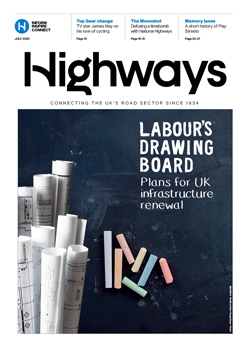America’s Department of Transportation Secretary Elaine Chao has told a conference that the “quite brilliant” engineers and technologists who are developing automated vehicles need to “step up and educate the public about this new technology” to boost confidence.
The Association for Unmanned Vehicle Systems International quotes Chao as saying that “Without public acceptance, automated technology will never reach its full potential.”
In her keynote address at the Automated Vehicles Symposium’s first full day she said, “Consumer acceptance will frame the limitations to growth of this technology, so we all need to work together to get it right.”
“The public has concerns about the security and privacy of automated technology as well as the potential for hacking,” she said. “Can they operate safely alongside human-operated systems? In January, the American Automobile Association reported that 63% of US drivers are afraid to ride in a fully autonomous vehicle. That’s down from 78% reporting such fears in early 2017, but it is still a majority.
“Policy makers are also concerned about the potential impact of autonomous technology on the workforce. New technologies create jobs, but the transition period can be very difficult for dislocated workers. So, this needs to be addressed to help workers adapt to this new world.
“Addressing these challenges requires good information. So, the Department is holding this summit and taking other steps to gather information as it moves forward on the regulatory front. On January 10, 2018, the Department published the first of four in a series of formal requests for public feedback to help identify barriers to innovation.
“They include:
- from the National Highway Traffic Safety Administration, asking for insights regarding regulatory barriers for AV.
- from the Federal Transit Administration that address AV bus technology, research and barriers.
- from the Federal Highway Administration that addresses infrastructure technologies for the safe integration of AVs.
She then listed the six basic principles the Department has developed to guide its work on autonomous vehicle policy:
- First, safety remains the Department’s top priority.
- Second, the Department’s approach will be flexible and tech neutral, not top down, command and control. We are not in the business of picking winners or losers. The market will help determine the most effective solutions.
- Third, when regulations are needed, they will be as non-prescriptive and performance-based as possible. At the same time, in all our regulatory actions and policy decisions going forward, the Department will not automatically assume that the driver of a vehicle is a human – it may be a computer.
- Fourth, the Department will work with the States and other authorities to avoid a patchwork approach that could inhibit innovation and make it more difficult for automated vehicles to cross state lines.
- Fifth, the Department will provide stakeholders with guidance, best practices, pilot programs, and other assistance to facilitate the safe integration of automated vehicles into our transportation system. The Department will also prepare for complementary technologies that enhance the benefits of automation, such as vehicle-to-vehicle and vehicle-to-infrastructure communications.
- And sixth, the Department recognises that there will always be the need for autonomous vehicles to operate side-by-side with traditional vehicles, in both rural and urban areas. We will not assume universal implementation of these technologies.
She closed by noting that “creativity and innovation are part of the great genius of America—one of its hallmarks”. “We must nurture and preserve this legacy,” she said. “Working together, we can help usher in a new era of transportation innovation and safety, and ensure that our country remains a global leader in autonomous technology.”





